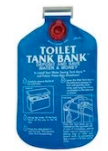Note on your audit paperwork or in the paragraph box below how many of each would be helpful in your home.
For instance, say, "I could use one APS to put my Bose subwoofers, my Blue Ray, and my XBox on, and a timer to put my wifi router on, which I will turn off from 1 AM to 7 AM." This will help us calculate your savings!
This is totally optional! It is here so that we can calculate your return on investment on any potential water fixture upgrade...if there are six people using one faucet, the faucet becomes more important than if there's only one person using it, right? So if you have 5 people and two bathrooms, the answer here is 2.5, for instance.

So that we can deliver what you want, please give us details. The one pictured is a handheld, which is great if you have room for it. Otherwise a "fixed" showerhead is best for smaller showers.Also let us know if you want chrome finish or brushed nickel? And of course, # of each.

You'll need one for each shower you want to use it with.

You'll need one for each shower you want to use it with.

So that we can deliver what you want, please give us details on size - are they quarter or nickel sized? And how many of each? Don't worry about finish - it's easy to pop out the insides and swap those and keep your existing finish, and we'll send you instructions for how to do this, too!

Remember, these are really only for older toilets.
For pipes, just add the number of feet of pipe that you can feel heat from a half inch away (e.g., do not touch the pipe, just hover above to feel if heat is emanating). There are intake pipes that should not be insulated, as they are tap temperature. tank, just indicate diameter of the tank across the top, the height of the tank, and the number of gallons.
This should be clear on your electric bill, or you can probably find it googling the name of your utility and your town/area. If you can't find it, no problem - we can probably find it if we have your zip code.